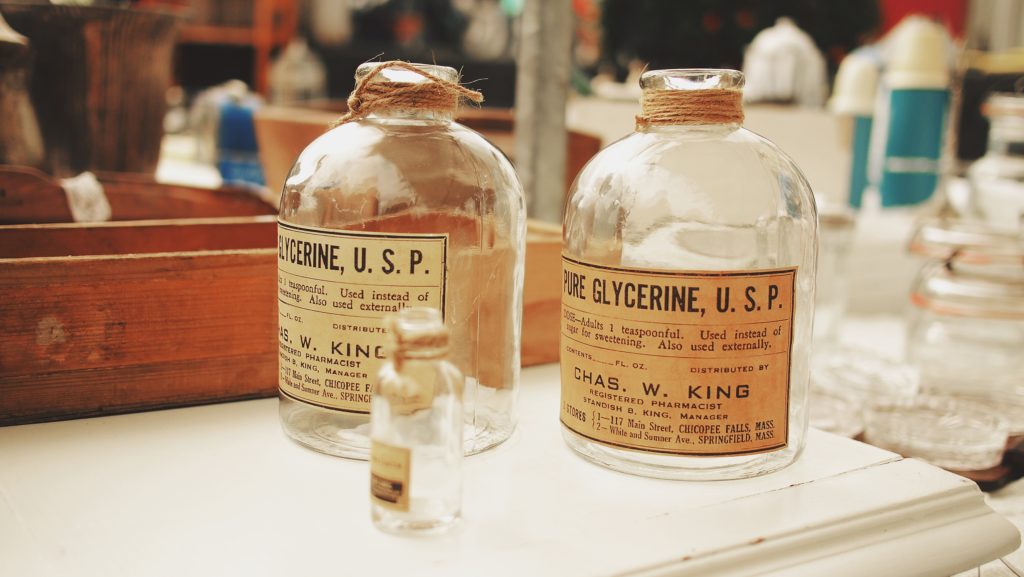
Photo by Daria Nepriakhina on Unsplash
If you read my post titled What You Need to Know About Sunscreen, then you are probably eagerly anticipating this post since I am going to explain many of the common ingredients I mentioned previously!
But before I start, I want to apologize for the small hiatus. The past two weeks have been very crazy for myself and my family so I am a little behind on my posts and for that I apologize.
I certainly try to make 2 posts a week, but sometimes life gets in the way…….this time, it was due to a car accident. Thankfully everyone is ok, but unfortunately there was a good amount of damage done to our 1 month old van. Thank goodness for insurance!
Now, let’s get to explaining the ingredients I mentioned in my previous post! If you’ll recall, I talked about mineral filter based and chemical filter based sunscreens, with chemical filter being the most common, and likely the most harmful to our health.
That’s because chemical filter based sunscreens typically combine two to six of the following active ingredients:
oxybenzone, octinoxate, avobenzone, octisalate, octocrylene, and homosalate.
Hint – if you’d like to skip the info and go straight to using an amazing product which is also a SAFE sunscreen, please contact me by clicking the button below.
So what are these chemicals? Let’s jump right in to explaining what these are.
Sunscreen Chemical # 1 – Oxybenzone
This one I’ve talked about before because it’s extremely common and widely used in many sunscreens available on the market. It is considered to be highly toxic.
This chemical can be detected in nearly every American, according to the ewg.org website. It can be found in mothers’ milk and has 1% to 9% skin penetration according to lab studies. It is a weak estrogen, moderate anti-androgen and is associated with altered birth weight in human studies.
Exposure to this chemical and other related chemicals have been linked to increased risk of endometriosis in women. Men with greater exposures benzophenone-2 and/or 4-hydroxybenzone had poorer sperm quality and reported that it took longer to conceive with their partners.
Oxybenzone is a relatively highly rated skin allergen. It’s also contributing to the bleaching and collapse of our coral reefs.
Sunscreen Chemical #2 – Octinoxate
This is also one that I’ve talked about before. It is also extremely common and widely used just as oxybenzone. It is considered to be highly toxic.
It is found in mothers’ and has less than 1% skin penetration in human and lab studies. It produces hormone-like activity and has caused reproductive system, thyroid, and behavioral alterations in animal studies.
It has been linked to delayed puberty and altered estrous cycling for female mice. It is also possible that this chemical can reduce fertility in men.
Octinoxate, aka Octylmethoxycinnamate, is a moderately rated skin allergen. This chemical is also contributing to the bleaching and collapse of our coral reefs.
Sunscreen Chemical #3 – Avobenzone
This chemical is widely used in US sunscreens and is considered to be relatively low in toxicity by EWG.
Avobenzone provides the best UVA protection out of the chemical filters. There is very limited skin penetration and no evidence of hormone disruption. However, a breakdown of this ingredient causes this to be a relatively high skin allergen.
It is also unstable in sunshine and must be mixed with stabilizers in order to avoid breakdown. There is a risk of cancer associated with this chemical.
Ok, so if you are already feeling overwhelmed and don’t feel like you can, or want, to absorb any more, please contact me by clicking the button below! I will happily give you my info on my favorite sunscreen so that you can skip the research and go straight to a great and SAFE product!
Now let’s continue on………………
Sunscreen Chemical #4 – Octisalate
This chemical is widely used in US sunscreens and is considered to be moderately toxic.
Octisalate is used to stabilize avobenzone. Studies have shown that there is skin penetration but it is not indicated by how much. This chemical is rarely reported to be a skin allergen.
Sunscreen Chemical #5 – Octocrylene
This chemical is widely used in US sunscreens and is considered to be moderately toxic.
It can be found in mothers’ milk and has also been shown to penetrate skin in lab studies, but again, there is no indication as to how much. This ingredient is also a relatively high skin allergen.
This chemical may interfere with cellular signaling, cause mutations, lead to cell death, and may be implicated in cardiovascular disease.
Sunscreen Chemical #6 – Homosalate
This chemical is widely used in US sunscreens and is considered to be moderately toxic.
It can be found in mothers’ milk and has a skin penetration of less than 1% in human and laboratory studies. This ingredient disrupts estrogen, androgen, and progesterone.
Other concerns about this chemical is that sunlight breaks down homosalate into a harmful and toxic byproduct.
Ok, so all of that is definitely a mouth full and daunting to say the least! So what should you do with this information? My suggestion would be to go with a mineral based sunscreen. But do note that not all mineral based sunscreens are created equal either!
Again, if you’d like my recommendation on the best mineral sunscreen available, please contact me by clicking the button below!
And of course I am always happy to discuss further and answer any other questions that you may have. Please do NOT hesitate to contact me. I enjoy helping people to live healthier, and continue to search for ways to live healthier myself!
If you’d like to connect with me via social media, then please click the like button in the facebook box either to the right of this article or at the bottom. I am also on Pinterest and others (see icons also to the right of this article).
And you are always welcome to contact me directly by clicking any of the blue buttons in this article.
I hope that you have found some value in the information above about the chemicals/ingredients in many of the sunscreens available today and will feel more confident in taking your first (or next) steps in eliminating toxins and achieving true wellness.
If you have found value, please share by clicking on the icons below this article so that I can help your friends and loved ones as well!
Until next time……..
Here’s to achieving true wellness!

P.S – What do you want to know about? Drop me a comment below and let me know what you’d like to learn more about to help you achieve true wellness!
*Legal Disclaimer – All information provided above is for educational purposes only. Information should not be construed as medical or legal advice in any capacity and is not intended to prevent, diagnose, treat, or cure disease.